When choosing a language learning tool, the vast array of options can be overwhelming. Two popular names in the field are Rosetta Stone and Jumpspeak. Both platforms claim to help users master new languages, but they differ significantly in approach, features, and user experience.
In this article, we’ll compare these two platforms in detail and explain why Rosetta Stone stands out as the superior option.
1. Learning Methodology
Rosetta Stone:
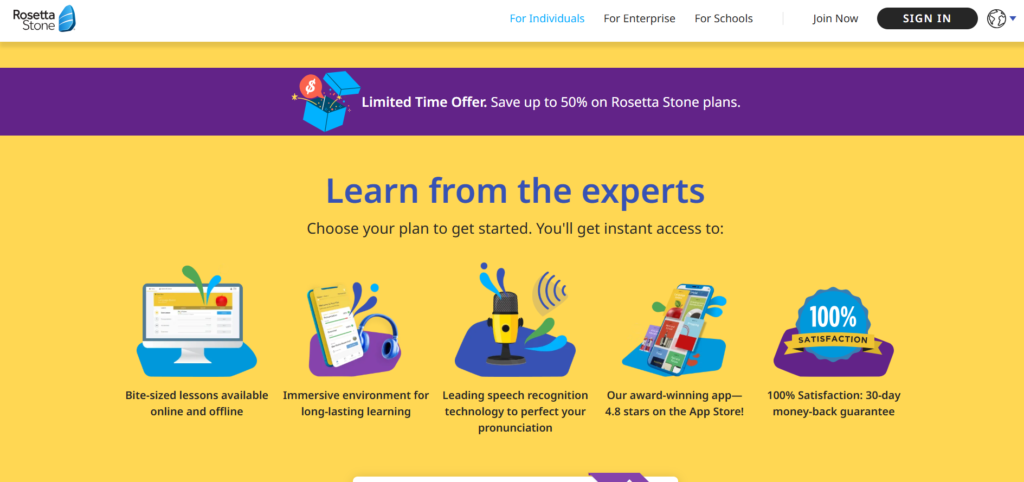
Rosetta Stone is built around its Dynamic Immersion® method, a technique that mimics the natural way we learn our first language. It focuses on associating words with images and sounds without relying on translations. This method aims to help users think in the language rather than translating back and forth.
Jumpspeak:
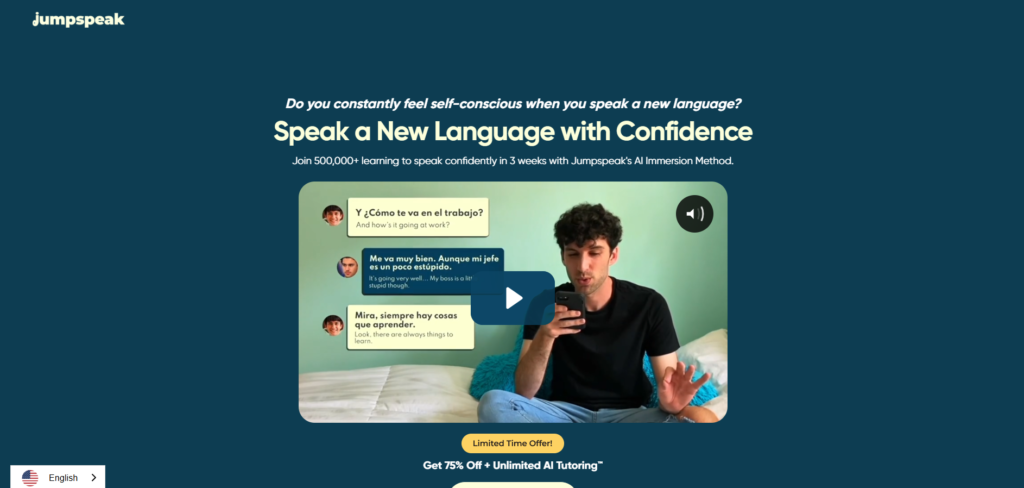
Jumpspeak uses AI-driven technology to simulate conversations, focusing on speaking and listening practice. While this approach can help with conversational skills, it may not be as effective in establishing a foundational understanding of grammar and vocabulary.
Advantage:
Rosetta Stone’s immersive approach is more holistic, allowing learners to gradually build all aspects of language—speaking, reading, listening, and writing. It offers a deeper understanding of the language as a whole.
2. Language Availability
Rosetta Stone:
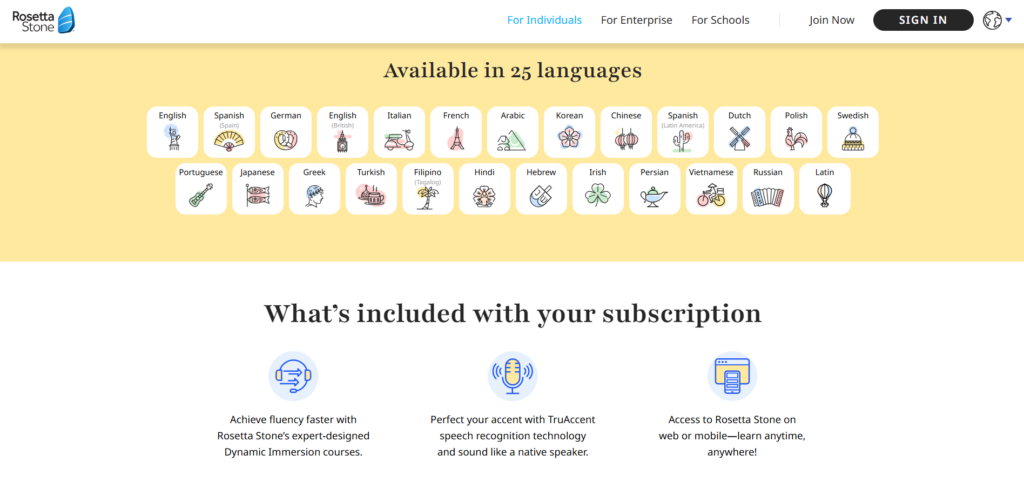
Rosetta Stone offers courses in 25 languages, including widely spoken ones like Spanish, French, German, and Chinese, as well as less common options such as Swahili and Hebrew.
Jumpspeak:
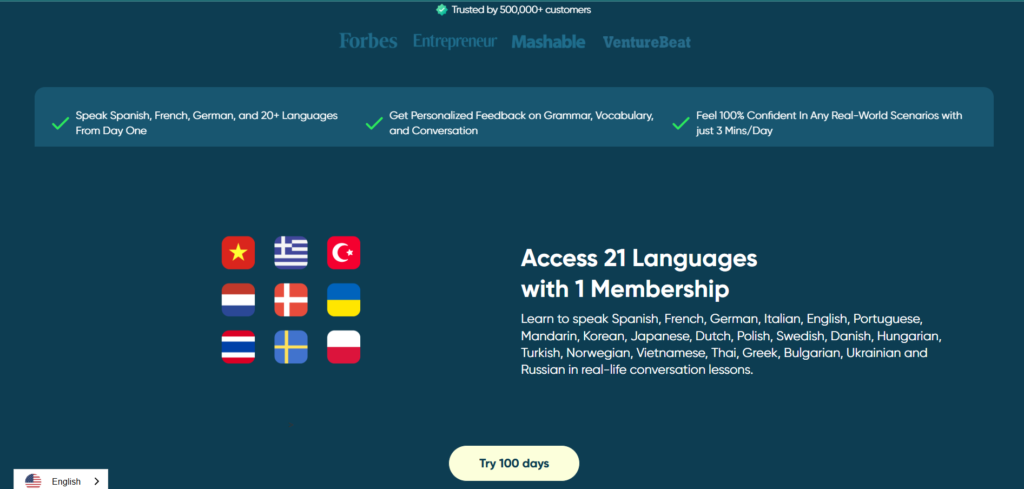
Jumpspeak offers 21 languages, covering popular choices such as Spanish, French, and German, but lacks some of the rarer languages available on Rosetta Stone.
Advantage:
Rosetta Stone wins with its wider range of languages, making it a better choice for learners looking for a broader selection.
3. Curriculum Structure
Rosetta Stone:
Rosetta Stone offers a comprehensive curriculum that spans all four key language skills: speaking, reading, writing, and listening. The program is organized progressively, so learners start with basic vocabulary and gradually move to more complex structures.
Jumpspeak:
Jumpspeak primarily focuses on speaking and listening through AI-driven conversations. While this can be useful for learners focused on conversational skills, it doesn’t offer the same depth when it comes to grammar, writing, and reading practice.
Advantage:
Rosetta Stone’s well-rounded and structured curriculum is more suited for learners looking for a thorough language education.
4. Speech Recognition Technology
Rosetta Stone:
Rosetta Stone integrates TruAccent®, a speech recognition technology that gives users instant feedback on their pronunciation. This feature helps learners fine-tune their accent and pronunciation to sound more native-like.
Jumpspeak:
Jumpspeak also provides feedback on pronunciation, but its AI technology is still developing and may not be as accurate or reliable as Rosetta Stone’s TruAccent®.
Advantage:
Rosetta Stone’s TruAccent® technology offers more precise and effective pronunciation guidance, making it the superior choice for learners who want to improve their accent.
5. User Interface and Experience
Rosetta Stone:
The Rosetta Stone interface is clean and intuitive. It uses visual elements and context clues to help users understand vocabulary and grammar in context, making the lessons engaging and easy to follow.
Jumpspeak:
Jumpspeak features a modern interface focused on chat-based interactions. While it may appeal to users who enjoy conversational practice, the interface may not be as visually engaging or as structured as Rosetta Stone’s.
Advantage:
Rosetta Stone provides a more user-friendly, visually stimulating interface that enhances the learning experience.
6. Offline Accessibility
Rosetta Stone:
Rosetta Stone allows users to download lessons for offline access. This is a significant advantage for learners who want to study on the go or when they don’t have an internet connection.
Jumpspeak:
Jumpspeak requires a stable internet connection for most of its AI-driven lessons, limiting access when offline.
Advantage:
Rosetta Stone’s offline access feature gives it an edge, allowing learners to study anytime and anywhere.
7. Progress Tracking
Rosetta Stone:
Rosetta Stone offers robust progress tracking tools. Users can see how far they’ve come and identify areas where they need improvement, providing motivation and structure throughout their learning journey.
Jumpspeak:
Jumpspeak tracks progress primarily through conversational milestones, but it lacks the detailed tracking and feedback system that Rosetta Stone provides.
Advantage:
Rosetta Stone’s comprehensive progress tracking helps learners stay on track and achieve their goals.
8. Cultural Context Integration
Rosetta Stone:
Rosetta Stone integrates cultural context into its lessons, helping learners understand not just the language but also how it’s used in real-life situations. This cultural awareness is crucial for deeper understanding and more meaningful conversations.
Jumpspeak:
Jumpspeak focuses more on conversational practice and less on cultural context, which means users might miss out on important nuances of the language.
Advantage:
Rosetta Stone’s cultural context integration adds depth to the learning experience, making it a more well-rounded choice for language learners.
9. Pricing and Value
Rosetta Stone:
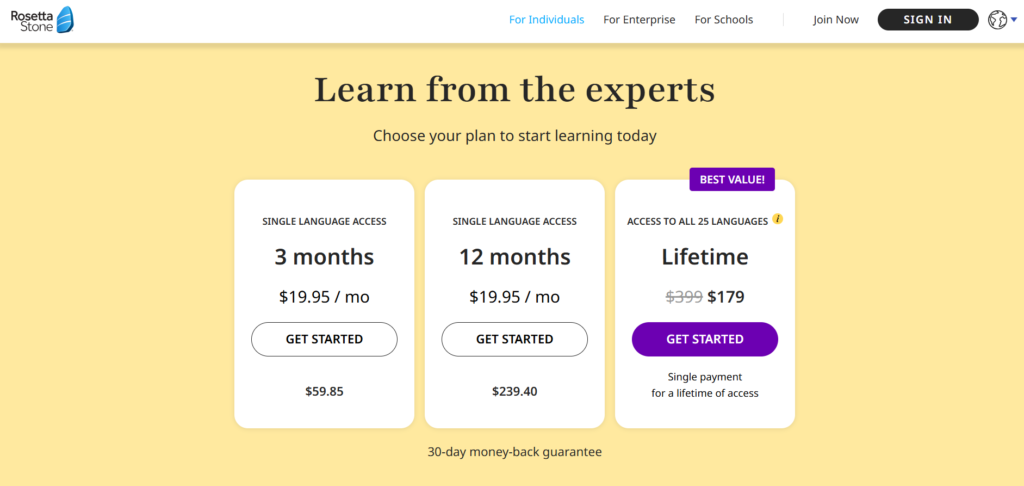
Rosetta Stone offers a lifetime subscription for around $179.99, which gives users unlimited access to all the available languages. This one-time payment offers great value for money, especially considering the breadth of content.
Jumpspeak:
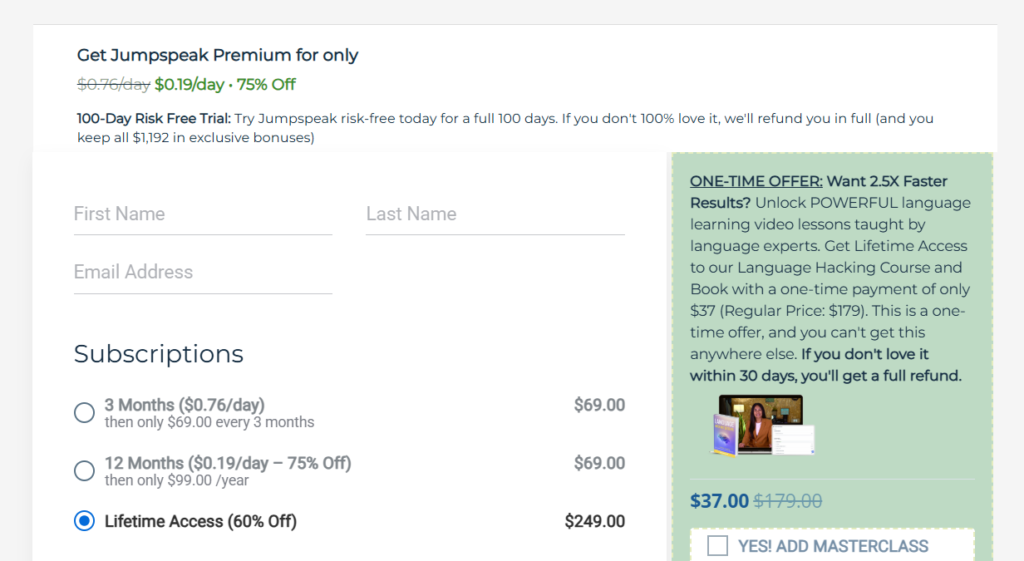
Jumpspeak operates on a monthly subscription model, with prices ranging from $8 to $13 per month. There is also a lifetime option priced at $249, but for many users, the recurring costs of the monthly plan can add up over time.
Advantage:
Rosetta Stone’s one-time payment is more economical in the long run, providing excellent value for the extensive content it offers.
10. Suitability for Different Learners
Rosetta Stone:
Rosetta Stone is ideal for learners at any proficiency level, from beginners to advanced speakers. Its comprehensive curriculum adapts to various learning styles, making it a great choice for a wide range of learners.
Jumpspeak:
Jumpspeak is best suited for intermediate and advanced learners who want to focus on improving their conversational skills. It may not be the best option for beginners looking to build a strong foundation in grammar and vocabulary.
Advantage:
Rosetta Stone’s versatility makes it suitable for learners of all levels, while Jumpspeak is more specialized for conversational practice.
11. Customer Support and Resources
Rosetta Stone:
Rosetta Stone offers robust customer support, including live tutors, community forums, and a range of learning resources. This ensures that users have access to help when they need it.
Jumpspeak:
Jumpspeak offers AI-based feedback but provides limited human support options. While it is efficient, it may not provide the same level of personalized assistance as Rosetta Stone.
Advantage:
Rosetta Stone’s more comprehensive support system is a valuable resource for learners who need extra help.
12. Reputation and Trustworthiness
Rosetta Stone:
Rosetta Stone has been a trusted name in language learning since 1992, with millions of users worldwide. It has built a solid reputation for delivering quality education and is used by institutions like NASA.
Jumpspeak:
Jumpspeak is a relatively newer player in the market and is still in the process of building a strong reputation. It has gained popularity for its innovative approach but lacks the longstanding credibility of Rosetta Stone.
Advantage:
Rosetta Stone’s long-standing reputation and proven success make it the more reliable option for serious language learners.
Conclusion
While both Rosetta Stone and Jumpspeak offer unique features and benefits, Rosetta Stone clearly stands out in nearly every aspect. Its immersive methodology, comprehensive curriculum, advanced speech recognition, and overall value make it the superior choice for anyone serious about mastering a new language. Whether you’re a beginner or an advanced learner, Rosetta Stone offers a well-rounded, accessible, and effective way to achieve fluency.
FAQ’s
Which app is better for beginners, Rosetta Stone or Jumpspeak?
Rosetta Stone offers a more structured and beginner-friendly approach than Jumpspeak.
Which platform provides more language options?
Rosetta Stone supports 25 languages, while Jumpspeak offers fewer.
Does Rosetta Stone include reading and writing skills?
Yes, Rosetta Stone covers reading, writing, speaking, and listening.
Is Jumpspeak focused only on speaking practice?
Yes, Jumpspeak emphasizes speaking through AI conversations.
Can I use Rosetta Stone offline?
Yes, Rosetta Stone allows lesson downloads for offline use.



